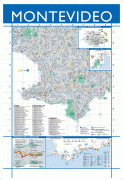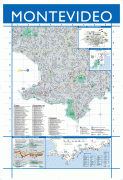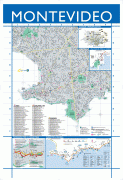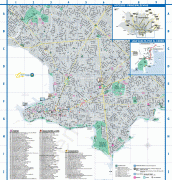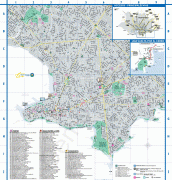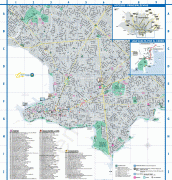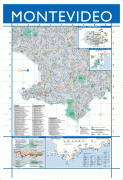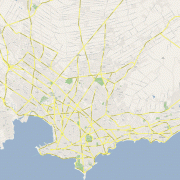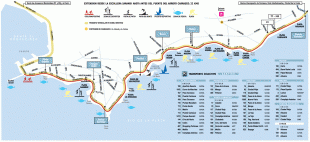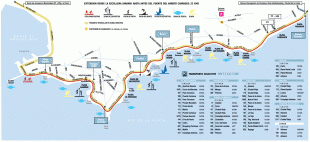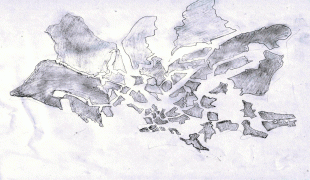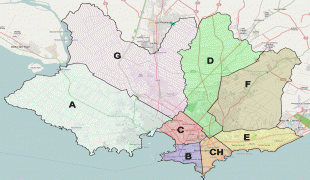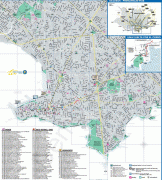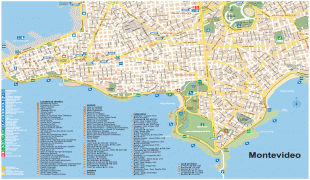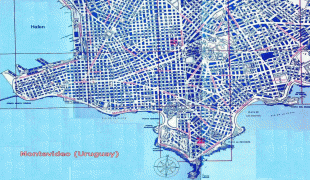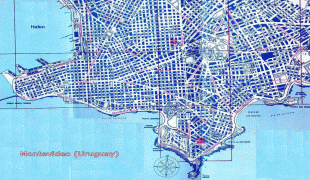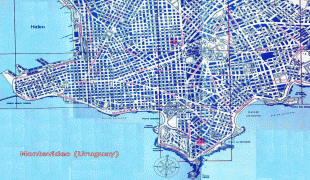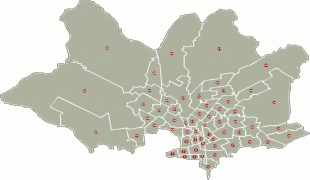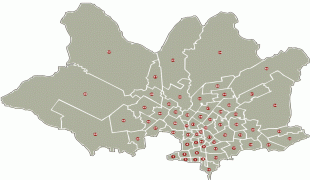Montevideo
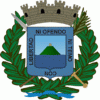 |
The city was established in 1724 by a Spanish soldier, Bruno Mauricio de Zabala, as a strategic move amidst the Spanish-Portuguese dispute over the platine region. It was also under brief British rule in 1807, but eventually the city was retaken by Spanish criollos who defeated the British invasions of the River Plate. Montevideo is the seat of the administrative headquarters of Mercosur and ALADI, Latin America's leading trade blocs, a position that entailed comparisons to the role of Brussels in Europe.
The 2019 Mercer's report on quality of life, rated Montevideo first in Latin America, a rank the city has consistently held since 2005. , Montevideo was the 19th largest city economy in the continent and 9th highest income earner among major cities. In 2022, it has a projected GDP of $53.9 billion, with a per capita of $30,148.
In 2018, it was classified as a beta global city ranking eighth in Latin America and 84th in the world. Montevideo hosted every match during the first FIFA World Cup, in 1930. Described as a "vibrant, eclectic place with a rich cultural life", and "a thriving tech center and entrepreneurial culture", Montevideo ranked eighth in Latin America on the 2013 MasterCard Global Destination Cities Index.
It is the hub of commerce and higher education in Uruguay as well as its chief port. The city is also the financial hub of Uruguay and the cultural anchor of a metropolitan area with a population of around 2 million.
The monumental relationship with Montevideo, MN, began in 1905 when the mayor of each city sent a national flag to the other.
Map - Montevideo
Map
Country - Uruguay
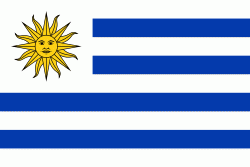 |
 |
| Flag of Uruguay | |
The area that became Uruguay was first inhabited by groups of hunter–gatherers 13,000 years ago. The predominant tribe at the moment of the arrival of Europeans was the Charrúa people, when the Portuguese first established Colónia do Sacramento in 1680; Uruguay was colonized by Europeans late relative to neighboring countries. The Spanish founded Montevideo as a military stronghold in the early 18th century because of the competing claims over the region. Uruguay won its independence between 1811 and 1828, following a four-way struggle between Portugal and Spain, and later Argentina and Brazil. It remained subject to foreign influence and intervention throughout the 19th century, with the military playing a recurring role in domestic politics. A series of economic crises and the political repression against left-wing guerrilla activity in the late 1960s and early 1970s put an end to a democratic period that had begun in the early 20th century, culminating in the 1973 coup d'état, which established a civic-military dictatorship. The military government persecuted leftists, socialists, and political opponents, resulting in deaths and numerous instances of torture by the military; the military relinquished power to a civilian government in 1985. Uruguay is today a democratic constitutional republic, with a president who serves as both head of state and head of government.
Currency / Language
| ISO | Currency | Symbol | Significant figures |
|---|---|---|---|
| UYU | Uruguayan peso | $ | 2 |
| ISO | Language |
|---|---|
| ES | Spanish language |






